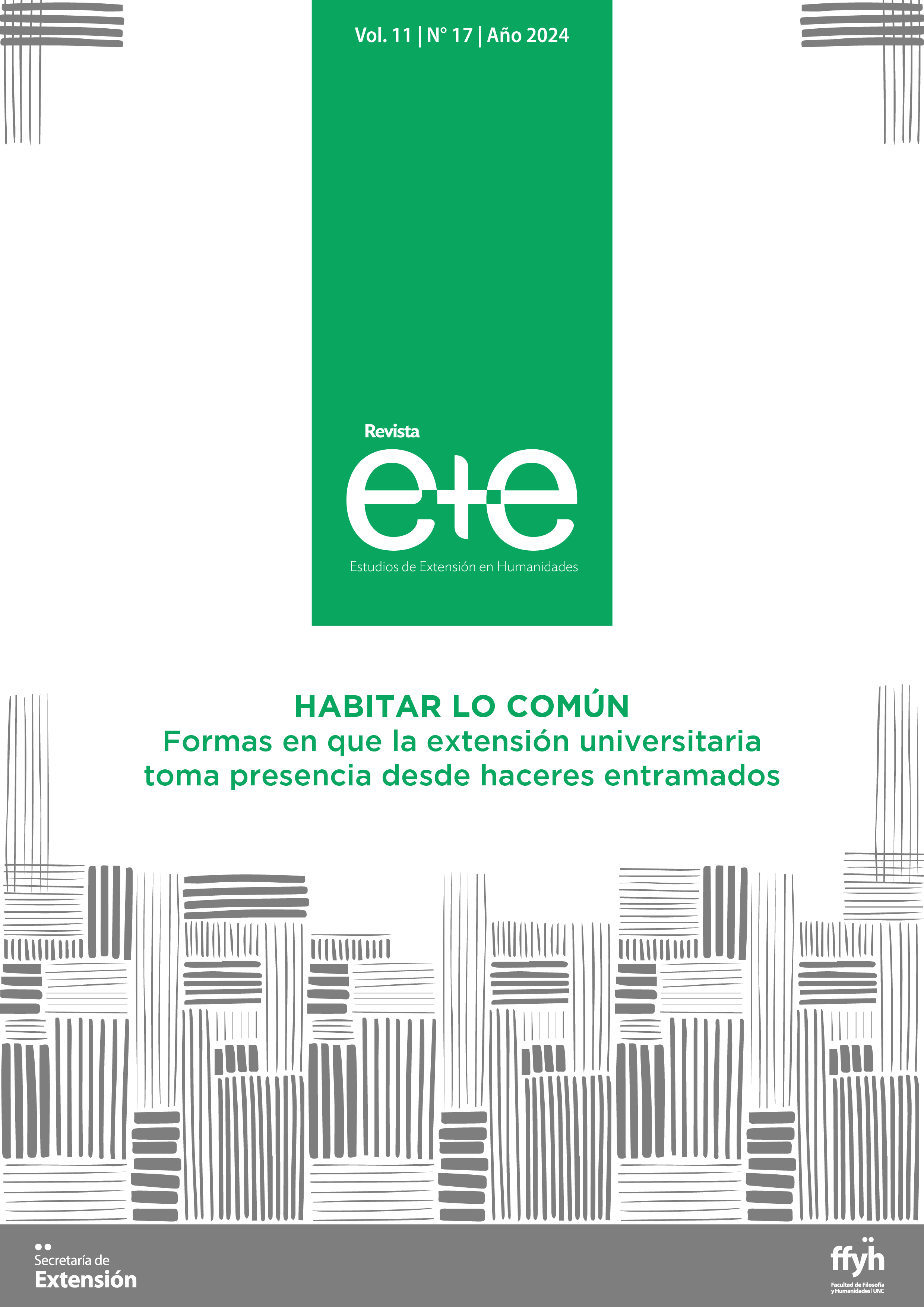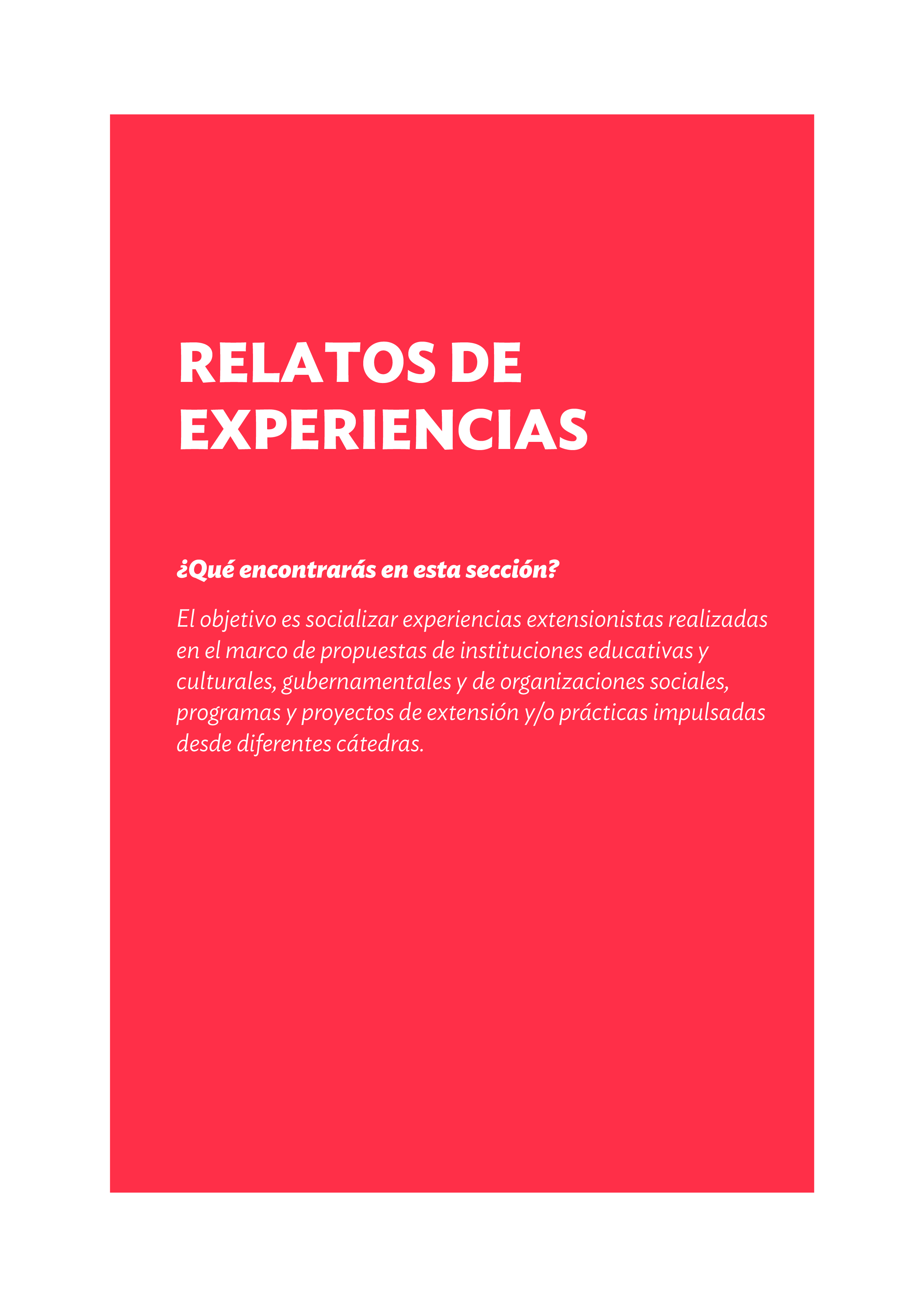Vol. 11 No. 17 (2024): Inhabiting the common. Ways in which the university extension takes presence from interwoven doings

Making reference to inhabiting and the common opens us to a range of possibilities both in terms of theoretical-methodological perspectives as well as in terms of tasks related to university extension. Combining both in a common inhabiting summons us to also make room for the interweaving of encounters and misunderstandings in the ways of understanding what we conceive as extension and the lines of thought-action from which we weave our positionality together with others. In this line, this dossier invites contributions to the various sections of the journal (articles, audiovisual debates, experience stories, reviews and conversations) that from various narratives point to the way in which inhabiting and the common is defined, co-defined and redefined by diverse collectives - environmentalists, indigenous socio-territorialists, feminists, transfeminists, transfeminists, movements of movements, and others, feminists, transfeminists, LGBTIQA+ movements, peasants, neighborhoods, neighborhoods, among others - from their daily activities, from their encounters and interpellations with various actors, as well as in the encounters and interpellations of the extensionist teams themselves in the articulations, the links that are created and the collaborative work that takes place. We recognize diverse critical traditions that have contributed to the interpretation and production of the common in our contexts (Fanon, Freire, Arguedas, Fals Borda, Zibechi, Esteva, Gutierrez Aguilar, Navarro, Linsalata, Tzul Tzul, among many others). Also thinkers (Lefebvre, Latour, Hobsbawm, Massey, Ingold, Holloway, Fisher, Colquhoun, Fernández-Savater, among others) who, from what they propose, illuminate and make it possible to make crossings, dialogues and articulations between thoughts, practices and imaginations around the common and community. Like Linsalata (2018), we understand that the common is not a thing or a good, but it is a doing, an activity, a political action from which links, solidarity ties, cooperation and a collective doing that allows facing territorial (in)justice, needs, difficulties are generated, creating other ways of inhabiting, of organization, of self-determination, of being and being in the world in constant creation, linking varied and pluriverse spatialities, temporalities and people-collectives that bet on a joint action and, as such, becomes a transformer of the present and a provocateur of other futures. In line with the above, the real spaces that enable encounters and assemblies can acquire a particular place in these descriptions as spheres in which the common is produced and common horizons are created. The relevance of these meetings is given in that they enable different understandings of the excluding geometries of power that we inhabit, recognizing the multiple forms of violence that undermine in many cases the ability of territories and landscapes to sustain life -which is not minor in the present context-; as well as showing the political practices that break into and between these geometries from counter-narratives and counter-cartographies that operate as a political tool in the elaboration of public or common geographies. Thus, to inhabit the common from the way in which the university extension takes presence summons then to share the ways of that joint, collective and collaborative doing, how weaves and weaves are generated in the projects, practices and extensionist actions, in the political and pedagogical forms that germinate, in the situations, affectations and interpellations that happen and in the practices of reciprocity and complementarity that are co-produced in that construction of doings and knowledge with others and from a we.

















